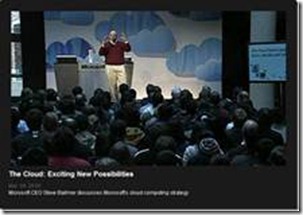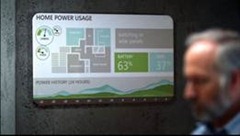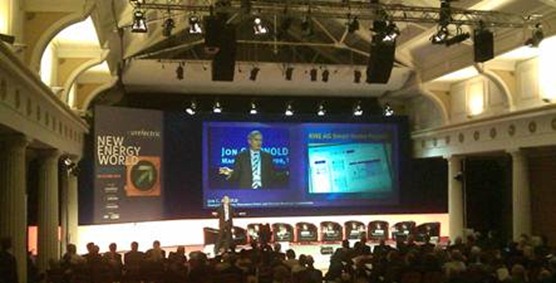Intersections, Convergence, Connections: The Future of 21st Century Energy Usage
In my view, the 21st Century will be known for the convergence of society and technology, in which people will become more keenly aware of our scarce natural resources and will have the tools and mechanisms to manage them for the long term benefits of mankind.
You can call this new resource management dynamic to be “more intelligent”, “smarter” or whatever word you want. The branding is not important. What is important is that one of the keys to long term success will be the integration of these tools and processes into our daily lives in an integrated and seamless fashion that add value.
At the EURELECTRIC Conference in Dublin a couple of weeks ago I gave a presentation on the Intersection of Energy, Home Automation and the Digital Lifestyle in which I offered examples of the smart metering and home automation projects that are being worked on today.
But my theme tried to tackle the much bigger issue of what the average person wants to do today from a lifestyle perspective given all the competition for the time in our lives.
The key to success for technologists will be understanding what people really want to do in their daily lives: what do they care about, worry about, and want to do more of? What is the point of intersection where technology can aid/enhance/enrich/enable their lives with smart meters, home automation and energy management? Or, said another way, where is the intersection of smart meters, home automation and energy management with each person’s daily activity?
The questions attempt to get to the heart of what success looks like in the Digital World. Certainly Microsoft and many other tech companies have learned a lot in selling our products and services to consumers over the years. So what lessons have we learned in taking that to the next level? How can we apply that to smart metering, home automation and things like consumer energy management solutions?
When we talk about home automation and consumer energy management at Microsoft, we think about what long term success looks like. We talk about making these systems easy transparent as that is what users want to see and use. We want our technologies, whatever they may, assimilated into our customer’s digital lifestyle.
Then there’s the matter of enabling the digital lifestyle.
At my house my son floats between the phone, the Xbox and PC and the 50” flat screen TV. This is a normal part of his Digital Lifestyle now and for the foreseeable future. What gives him the ability to move better these various devices often using/playing the same application? It’s the Cloud as a platform and service.
We see the Cloud accelerating the digital lifestyle as it is the cloud which will provide next generation solutions by providing the on-demand computing and storage to host, scale, and manage Web applications on the internet.
We at Microsoft are making a deep investment and a bet for the business on the Cloud as games changer for the way that applications are delivered. You can read more about this from our TechEd 2010  conference which is premier technical education conference and our previous blog where Steve Ballmer talks about the Microsoft vision for Cloud computing.
conference which is premier technical education conference and our previous blog where Steve Ballmer talks about the Microsoft vision for Cloud computing.
Cloud-based services are natural for aggregating massive amounts of data across distant geographies and providing access to information and applications for just about any device, whether it is a PC, phone, TV or the next hot form-factor device. The utility executives should ask whether this will be any different for meter data collection, analytics for customer information for new products and services, or green-related programs or consumer energy management solutions or home automation solutions like Hohm?
As I closed my presentation in Dublin, I asked the audience to think about what success looks like in terms of integrating smart metering, home automation into the digital lifestyle in a way that is seamless, almost transparent and has value that will benefit mankind for the next 100 years. I then offered a video viewpoint on what the integrated digital future might look like 10 or 15 years from now. You can view a montage of the video here.
Everything in this video is based on research and technology explorations from across Microsoft, and throughout the industry. This is not science fiction, nor is it Hollywood. Every single thing here is something that could be real -- some of it is real today. Watch carefully because in every frame there's something new and advancing in terms of how technology will enable the improvement of productivity for businesses and individuals as well as the consumerization of energy technology into the digital lifestyle. This is the key to our journey into the new energy economy! – Jon C. Arnold
